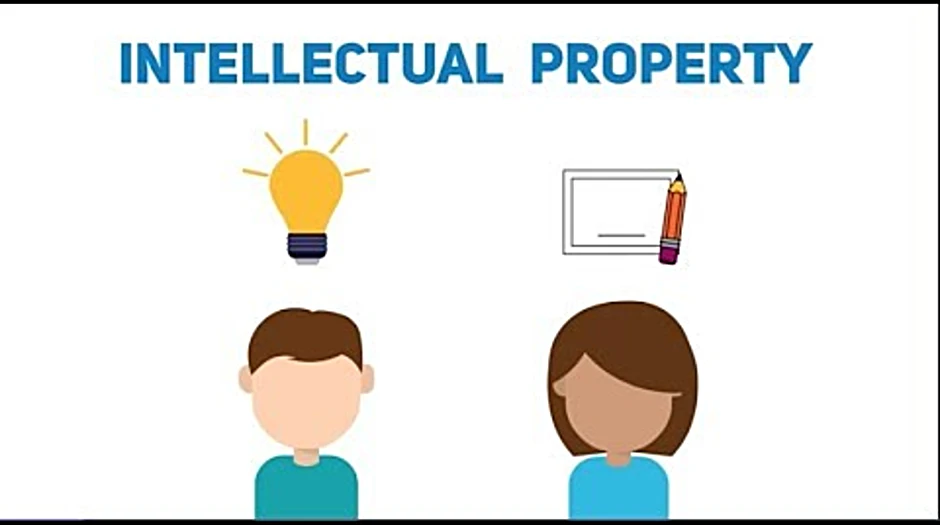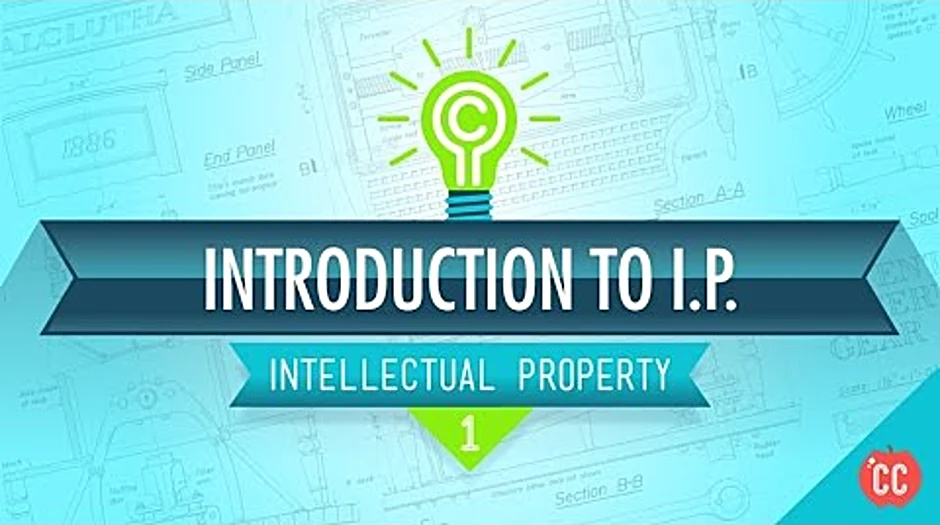Intellectual property risk definition [You Asked]
Table of Contents
- What is a simple definition of intellectual property?
- What is IP risk profiling?
- What are typical impact criteria of IP risk?
- What is IP risk tolerance?
- How can you avoid the risk of intellectual property rights infringement?
- What are the risks of copyright?
- What industries are most affected by threats to intellectual property?
- Who owns intellectual property?
- What are the 3 main types of intellectual property?
- What are the two types of intellectual property?
- What is the difference between intellectual property and copyright?
- What are the 4 types of intellectual property?
- What is the most important type of intellectual property?
- What is IP risk associated with?
- How do you manage risks of intellectual property?
- What are examples of intellectual property?
- What are the 5 types of intellectual property?
- What are the different types of intellectual property risk?
- What are the 3 ways of protecting intellectual property?
- What are the 7 intellectual property rights?
Last updated : Aug 7, 2022
Written by : Conchita Oberlies |
Current |
Write a comment |
What is a simple definition of intellectual property?
Overview. In general terms, intellectual property is any product of the human intellect that the law protects from unauthorized use by others. The ownership of intellectual property inherently creates a limited monopoly in the protected property.
What are the 4 types of intellectual property?
Patents, trademarks, copyrights, and trade secrets are valuable assets of the company and understanding how they work and how they are created is critical to knowing how to protect them.
What is IP risk associated with?
IP relates risks posed by competitors tend to get most press attention. Given the very nature of IP and the legal rights associated with it, IP assets belonging to competitors who are designing, developing, manufacturing, distributing and/or selling similar products or services, pose a potential IP risk to any company.
How do you manage risks of intellectual property?
- Share What's Needed. A pitch doesn't need to contain all of the details.
- Use NDAs.
- Get a Provisional Patent.
- Trademark Your Name.
- Do a Rep Check.
- Listen to Your Gut.
- Create a Paper Trail.
What are examples of intellectual property?
- Patents.
- Domain names.
- Industrial design.
- Confidential information.
- Inventions.
- Moral rights.
- Database rights.
- Works of authorship.
What are the 5 types of intellectual property?
In this post, we will explain the basics of the most common types of intellectual property — copyrights, moral rights, trademarks, patents, and trade secrets.
What are the different types of intellectual property risk?
- Copyright pirates.
- Patent flouters.
- Brand impersonators.
- Trade secret thieves.
What are the 3 ways of protecting intellectual property?
There are only three ways to protect intellectual property in the United States: through the use patents, trademarks or copyrights. A patent applies to a specific product design; a trademark to a name, phrase or symbol; and a copyright to a written document.
What are the 7 intellectual property rights?
Rights. Intellectual property rights include patents, copyright, industrial design rights, trademarks, plant variety rights, trade dress, geographical indications, and in some jurisdictions trade secrets.
What is IP risk profiling?
Your risk profile represents how much risk you are willing to take. This is determined through a series of questions regarding your risk attitude, financial means and investment objectives. At the end of the questionnaire, you are assigned a risk profile, also called the Investment Profile (IP).
What are typical impact criteria of IP risk?
The loss or diminished value of intellectual property as an asset, or diminished licensing or product revenues, as a result of legal findings of invalidity, unenforceability, or non-infringement, or challenges to title or ownership.
What is IP risk tolerance?
IP risk tolerance measures the level of risk to which a company is comfortable in reaching when accepting IP risks. Conversely risk tolerance can mean the degree beyond which more IP risk will be avoided.
How can you avoid the risk of intellectual property rights infringement?
- Create original images or music in advertisements. Businesses can use in-house staff or freelancers to create original graphics, content, music and more for their marketing materials.
- Obtain the appropriate licenses from copyright holders.
- Use royalty-free media.
What are the risks of copyright?
Risks involved in the unauthorised use of copyright materials go beyond legal issues. Risks may be financial in nature, such as fines, legal fees or the cost of resources deployed to address claims. Reputational damage is also a risk to consider.
What industries are most affected by threats to intellectual property?
All sectors of the arts and entertainment industry are susceptible to intellectual property theft. Live theater is often “cinecast†in movie theaters to expand the number of people who are able to take in a show.
Who owns intellectual property?
Generally, the creator of a work is deemed its owner. However, intellectual property ownership can be determined differently for different types of property and under varying circumstances. For example, if work is created for an employer, the employer is the owner of that intellectual property.
What are the 3 main types of intellectual property?
- Patents. If you have come up with a new invention, you may want to consider protecting it with a patent.
- Trademarks. Let's say that you have come up with a great new name for your brand, company or product.
- Copyrights.
What are the two types of intellectual property?
Intellectual property has two categories: industrial property and copyright and neighboring rights.
What is the difference between intellectual property and copyright?
The terms “copyright†and “intellectual property†are often used interchangeably. However, copyright is just a part of the scope of intellectual property, as are trade marks, patents, and designs. Intellectual property (IP) describes a form of property which is the intangible output of the human creative mind.
What is the most important type of intellectual property?
Patent. A patent is used to prevent an invention from being created, sold, or used by another party without permission. Patents are the most common type of intellectual property rights that come to people's minds when they think of intellectual property rights protection.

Check these related keywords for more interesting articles :
Ip australia trademark registration fees
Intent to use trademark europe
Registered trademark cases
Registered trademark records
What is the purpose of intellectual property law
Canada trademark registration database
How to trademark a name ct
How to revive an abandoned trademark
Can you trademark copyrighted material
Trademark registry germany
Intellectual property office eu
Intellectual property for sale
Can you license a trademark
Intellectual property european commission
How to find a patent number on a product
Did you find this article relevant to what you were looking for?
Write a comment
Comment by Lora Hagee
Thanks for this great article
Thanks for your comment Lora Hagee, have a nice day.
- Conchita Oberlies, Staff Member
Comment by jadiracyy
intellectual property or IP refers to something a person has either thought of or created some examples of IP include designs processes songs logos discoveries symbols and even brand-new varieties of plants IP belongs to the person who thought it up or put the work into creating it they get to decide who makes it how and where it's used and who can sell and profit from it but how can thinkers and creators keep their IP safe from misuse by others after all in a digital world it's easy to copy an idea or a design luckily there are laws in place to protect IP once a person is ready to go public with it there are four major paths to legal protection applying for a patent patents cover things like inventions new processes new machines and new ways of manufacturing things applying for a copyright copyrights protect works like art music writings movies and even software using a trademark to cover unique branding and identifiers like business names logos slogans mascots and more keeping something secret trade secrets make sure that things like manufacturing processes formulas and compilations of information never make it into the wrong hands getting these protections in place may seem difficult or time-consuming at first but protecting yourself is well worth the time and effort and it's not as hard as you may think this is where technology transfer or t2 comes in t2 helps negotiate the use sharing and assigning of IP so that companies and individuals can use government technology or a joint project between the government and private sector can take place t2 can make it easy to license a patent or share confidential information so both parties can help each other solve problems or create new products you
Thanks jadiracyy your participation is very much appreciated
- Conchita Oberlies
About the author

Conchita Oberlies
I've studied micro-g environment research at Cleveland Institute of Art in Cleveland and I am an expert in outdoor education. I usually feel anxious. My previous job was casino cashier I held this position for 11 years, I love talking about gunsmithing and fly tying. Huge fan of Meat Loaf I practice modern pentathlon and collect collectible card games.
Try Not to laugh !
Joke resides here...
Tags
What is IP risk profiling
What are typical impact criteria of IP risk
What is IP risk tolerance
How can you avoid the risk of intellectual property rights infringement
What are the risks of copyright
What industries are most affected by threats to intellectual property
Who owns intellectual property
What are the 3 main types of intellectual property
What are the two types of intellectual property
What is the difference between intellectual property and copyright
What are the 4 types of intellectual property
What is the most important type of intellectual property
What is IP risk associated with
How do you manage risks of intellectual property
What are examples of intellectual property
What are the 5 types of intellectual property
What are the different types of intellectual property risk
What are the 3 ways of protecting intellectual property
What are the 7 intellectual property rights
 : 8511
: 8511

